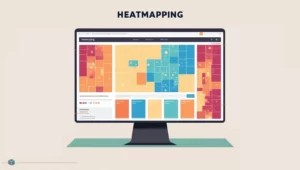Enhancing Web Design with Heatmapping
Introduction
Heatmapping is a powerful technique in web design that provides visual insights into user behavior. By tracking and displaying areas of high and low engagement, heatmaps help designers optimize websites for better usability and performance.
What is Heatmapping in Web Design?

Heatmapping is a data visualization tool that shows how users interact with a website. It highlights hotspots where users click, scroll, or hover the most, offering valuable insights into user behavior.
- Visualizes user interaction patterns.
- Identifies areas of interest and neglect.
- Helps refine website layout and functionality.
Why is Heatmapping Needed in Web Design?
Heatmapping is essential for understanding user behavior and making data-driven design decisions.
- Improves Usability: Identifies and resolves pain points in navigation and layout.
- Boosts Engagement: Highlights elements that capture user attention.
- Enhances Conversion Rates: Optimizes key areas like CTAs for better performance.
- Validates Design Choices: Provides real-time feedback on user interaction.
Key Design Considerations
When using Heatmapping in web design, keep these principles in mind:
- Define Goals: Know what user actions you want to analyze, such as clicks or scrolls.
- Choose the Right Tools: Use reliable heatmapping software like Hotjar or Crazy Egg.
- Focus on Key Pages: Analyze high-traffic pages like homepages and product pages.
- Combine with Analytics: Pair heatmap data with traditional analytics for deeper insights.
- Iterate and Test: Use findings to refine designs and test their impact.
Closing Note
Looking to optimize your website with actionable insights? Our team can help you leverage Heatmapping to create engaging and user-friendly designs. Contact us today!
